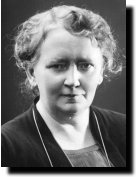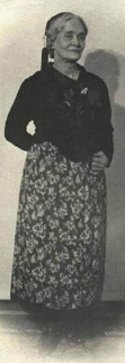Icelandic women
were among the first in the world to gain the vote, on June 19,1915. Women had been able to vote in local and parish elections since 1881, and in 1902 they became eligible for office in these bodies. The extension of the franchise to women was approved by Parliament in 1911, but was twice denied royal assent before finally being approved in 1915.
An Icelandic official, Klemenz Jónsson, was in Copenhagen on government business at the time. According to a tradition in his family, he arranged to have the document signed by the King on June 19, which was the birthday of his daughter, Anna Klemenzdóttir.
The Women's Rights Association, together with many women's societies in Reykjavík, arranged a celebration of this momentous step forward on July 7 that year.
Thousands of women in their finest clothes (probably most of them in the traditional
Peysuföt) paraded through the streets of Reykjavík with a marching band to Parliament House, where a delegation of ladies was admitted to address the assembly, and was greeted with four cheers from the men of Parliament. Enfranchisement of women did not bring any immediate revolution on the political scene, but the first woman member was elected to Alţingi (parliament) in 1922.
 |
Ingibjörg H. Bjarnason
the first woman to be
elected to the
Icelandic Parlament |
June 19 was marked by the Women's Rights Association as a special festival each year from 1916. At this period, the Women's Rights Association was vigorously campaigning to raise money for a National Hospital, and June 19 was an occasion for fund-raising for this purpose. Thus the day was sometimes called Landspítalasjóđsdagurinn (National Hospital Fund Day) as an alternative to Women's Rights Day. In 1930, the National Hospital became a reality, and Women's Rights Day gradually lost prominence, for a time.
The Women's Rights Association's annual publication, 19. júní (June 19), was published each year from 1917 to 1929. Re-launched in 1951, it has appeared every year since.
The modern feminist movement, which developed in the 1970s and 80s, was disconnected from the old Women's Rights Association and more closely associated with radical politics. Women's groups upheld the importance of May 1 (Workers' Day) and of March 8, International Women's Day, rather than the specifically Icelandic Women's Rights Day. But in recent years, June 19 has been reestablished as an occasion for women's celebrations, and for debate on feminist issues.
Ref.: "High Days and Holidays in Iceland" by Dr. Árni Björnsson, published by Mál og menning 1995.



